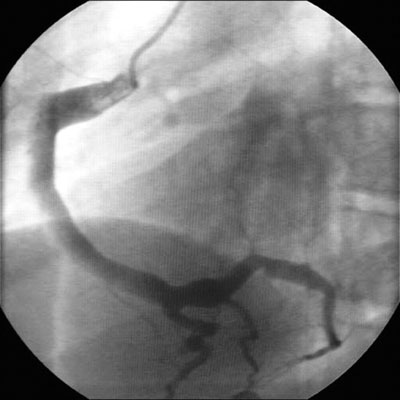შეჯამება
განსაზღვრება
ანამნეზი და გასინჯვა
ძირითადი დიაგნოსტიკური ფაქტორები
- რისკ-ფაქტორების არსებობა
- პოლიმორფული გამონაყარი
- კონიუნქტივის ჰიპერემია
- ლორწოვანი გარსის ანთება
- კანის ცვლილებები კიდურების პერიფერიებზე
- გადიდებული კისრის ლიმფური კვანძები
- გვირგვინოვან სისხლძარღვთა ანევრიზმები
- ცხელება და უკიდურესი გაღიზიანებადობა
სხვა დიაგნოსტიკური ფაქტორები
- პერიკარდიტი გამონაჟონით
- გულის შეგუბებითი უკმარისობა
- სახსრების ტკივილი, ან შეშუპება
- ნევროლოგიური გამოვლინებები
- გასტროინტესტინური გამოვლინებები
- უროლოგიური გამოვლინებები
- სხვა დერმატოლოგიური გამოვლინებები
რისკფაქტორები
- აზიური წარმომავლობა
- 3 თვიდან 4 წლამდე ასაკი
- მამრობითი სქესი
დიაგნოსტიკური კვლევები
1-ად შესაკვეთი გამოკვლევები
- FBC
- ერითროციტების დალექვის სიჩქარე (ედს)
- შრატის C-რეაქტიული ცილა
- ექოკარდიოგრაფია
გასათვალისწინებელი კვლევები
- ღვიძლის ფუნქციური ტესტები შრატში
- შარდის საერთო ანალიზი
- გულმკერდის რენტგენი
- ელექტროკარდგიოგრამა
- ნაღვლის ბუშტის ექოსკოპია
- სათესლე ჯირკვლების ექოსკოპია
- ხერხემლის პუნქცია
- მაგნიტურ რეზონანსული ანგიოგრაფია
- გულის კათეტერიზაცია და ანგიოგრაფია
- ნატრიურეზული პეპტიდის ტესტები
მკურნალობის ალგორითმი
გამოვლინება მდგომარეობის დაწყებიდან ≤10 დღის შემდეგ ან >10 დღის შემდეგ, მიმდინარე ანთების მტკიცებულების ფონზე
გამოვლენა დაწყებიდან >10 დღეში, მიმდინარე ანთების მტკიცებულების გარეშე
საწყისი ეპიზოდის შემდეგ: Z ქულა ყოველთვის <2; არანაირი ჩართულობა არავითარ დროს
საწყისი ეპიზოდის შემდეგ: Z ქულა ≥2.0 - <2.5; მხოლოდ დილატაცია
საწყისი ეპიზოდის შემდეგ: Z ქულა ≥2.5 - <5.0; მცირე ანევრიზმა
საწყისი ეპიზოდის შემდეგ: Z ქულა ≥5 - <10 (სანათურის აბსოლუტური ზომით <8 მმ); საშუალო ანევრიზმა
საწყისი ეპიზოდის შემდეგ: Z ქულა ≥10 ან სანათურის აბსოლუტური დიამეტრი ≥8 მმ; დიდი ან გიგანტური ანევრიზმა
კონტრიბუტორები
ავტორები
Paul Brogan, BSc(Hon), MBChB(Hon), FRCPCH, MSc, PhD
Professor of vasculitis
University College London
London
UK
გაფრთხილება:
PB is co-chief investigator of the KDCAAP trial, and is an author of several references cited in this topic.
Kirsty McLellan, BMedSci, MBChB, MRCPCH
Specialist Registrar in Paediatric Rheumatology
Great Ormond Street Hospital
London
UK
გაფრთხილება:
KM declares she has no competing interests.
მადლიერება
Dr Paul Brogan and Dr Kirsty McLellan would like to gratefully acknowledge Professor Abraham Gedalia and Dr James Krulisky, previous contributors to this topic.
გაფრთხილება:
AG declares that he has no competing interests. JK declares that he is a paid consultant for Axia Medical Solutions, a small skincare company from Carlsbad, CA.
რეცენზენტები
Michael Levin, null
Professor of International Child Health
Imperial College London
London
გაფრთხილება:
ML declares that he has no competing interests
Russell W. Steele, MD
Editor in Chief
Journal of Clinical Pediatrics
Department of Pediatrics
Division of Infectious Diseases
Ochsner Children's Health Center
New Orleans
LA
გაფრთხილება:
RWS declares that he has no competing interests.
John L. Ey, MD
Clinical Professor of Pediatrics
Department of Pediatrics
Oregon Health Science University
Portland
OR
გაფრთხილება:
JLE declares that he has no competing interests.
David Burgner, BSc(Hons), MBChB, MRCP, MRCPCH, FRACP, DTMH, PhD
Principal Research Fellow
Murdoch Childrens Research Institute
The Royal Children’s Hospital
Victoria
Australia
გაფრთხილება:
DB has received competitive research funding from the National Heart Foundation Australia and from the Agency for Science, Technology and Research of the Singapore Government. He is co-inventor on a patent related to diagnostics submitted through the Genome Institute of Singapore.
რეცენზენტების განცხადებები
BMJ Best Practice-ის თემების განახლება სხვადასხვა პერიოდულობით ხდება მტკიცებულებებისა და რეკომენდაციების განვითარების შესაბამისად. ქვემოთ ჩამოთვლილმა რეცენზენტებმა თემის არსებობის მანძილზე კონტენტს ერთხელ მაინც გადახედეს.
გაფრთხილება
რეცენზენტების აფილიაციები და გაფრთხილებები მოცემულია გადახედვის მომენტისთვის.
წყაროები
ძირითადი სტატიები
McCrindle BW, Rowley AH, Newburger JW, et al; American Heart Association. Diagnosis, treatment, and long-term management of Kawasaki disease: a scientific statement for health professionals from the American Heart Association. Circulation. 2017 Apr 25;135(17):e927-99.სრული ტექსტი აბსტრაქტი
Kawasaki T, Kosaki T, Okawa S, et al. A new infantile acute febrile mucocutaneous lymph node syndrome (MLNS) prevailing in Japan. Pediatrics. 1974 Sep;54(3):271-6. აბსტრაქტი
de Graeff N, Groot N, Ozen S, et al. European consensus-based recommendations for the diagnosis and treatment of Kawasaki disease - the SHARE initiative. Rheumatology (Oxford). 2019 Apr 1;58(4):672-82.სრული ტექსტი აბსტრაქტი
Gorelik M, Chung SA, Ardalan K, et al. 2021 American College of Rheumatology/Vasculitis Foundation guideline for the management of Kawasaki disease. Arthritis Care Res (Hoboken). 2022 Apr;74(4):538-48. აბსტრაქტი
Newburger JW, Takahashi M, Beiser AS, et al. A single intravenous infusion of gamma globulin as compared with four infusions in the treatment of acute Kawasaki syndrome. N Engl J Med. 1991 Jun 6;324(23):1633-9. აბსტრაქტი
Lei WT, Chang LS, Zeng BY, et al. Pharmacologic interventions for Kawasaki disease in children: A network meta-analysis of 56 randomized controlled trials. EBioMedicine. 2022 Apr;78:103946.სრული ტექსტი აბსტრაქტი
გამოყენებული სტატიები
ამ თემაში მოხსენიებული წყაროების სრული სია ხელმისაწვდომია მომხმარებლებისთვის, რომლებსაც აქვთ წვდომა BMJ Best Practice-ის ყველა ნაწილზე.

დიფერენციული დიაგნოზები
- სტაფილოკოკური ან სტრეპტოკოკური ინფექცია
- სისტემური იუვენილური იდიოპათიური ართრიტი(სისტემური JIA)
- ქუნთრუშა
მეტი დიფერენციული დიაგნოზებიგაიდლაინები
- Guideline for the management of Kawasaki disease
- European consensus-based recommendations for the diagnosis and treatment of Kawasaki disease - the SHARE initiative
მეტი გაიდლაინებიშედით სისტემაში ან გამოიწერეთ BMJ Best Practice
ამ მასალის გამოყენება ექვემდებარება ჩვენს განცხადებას